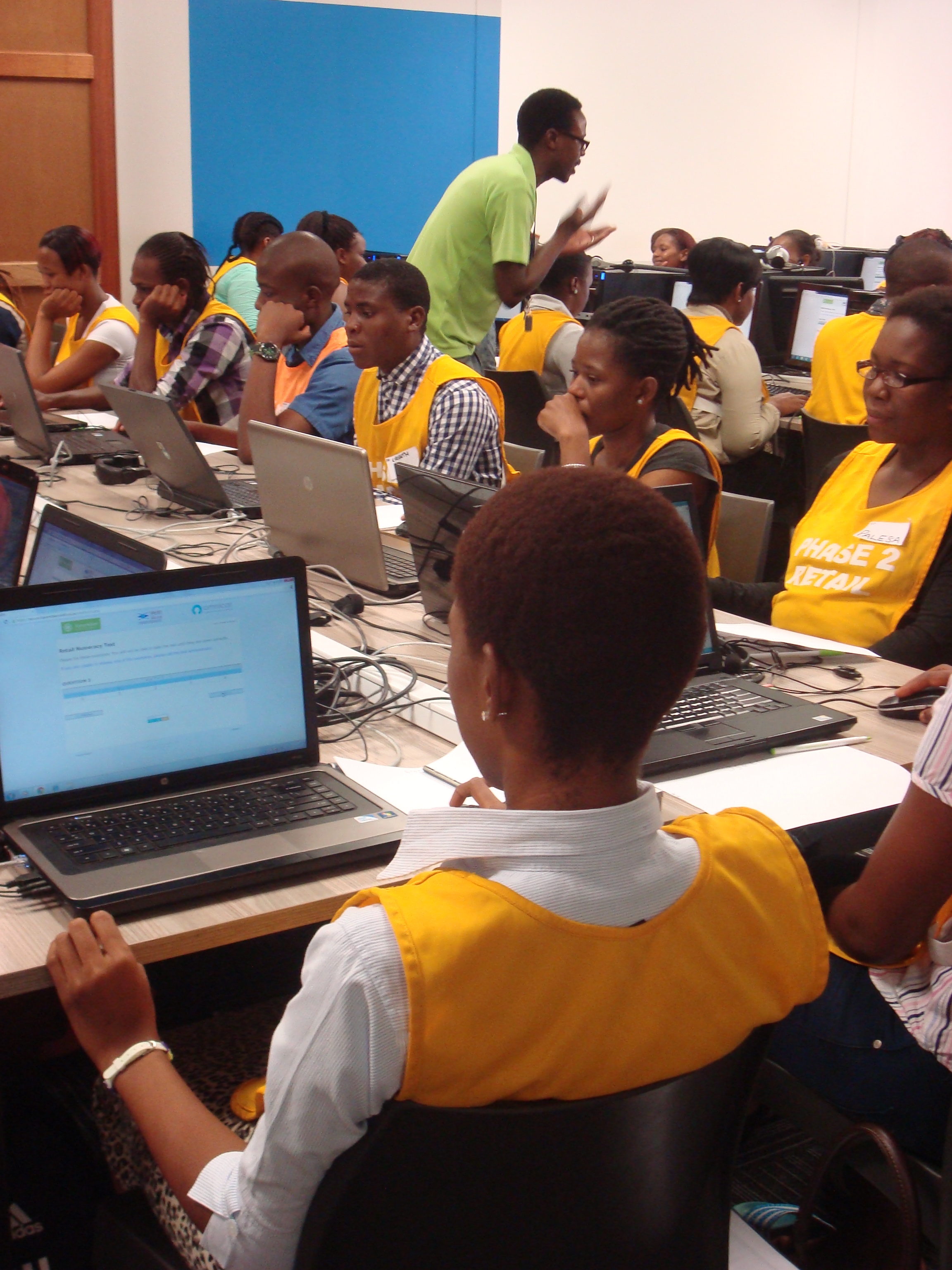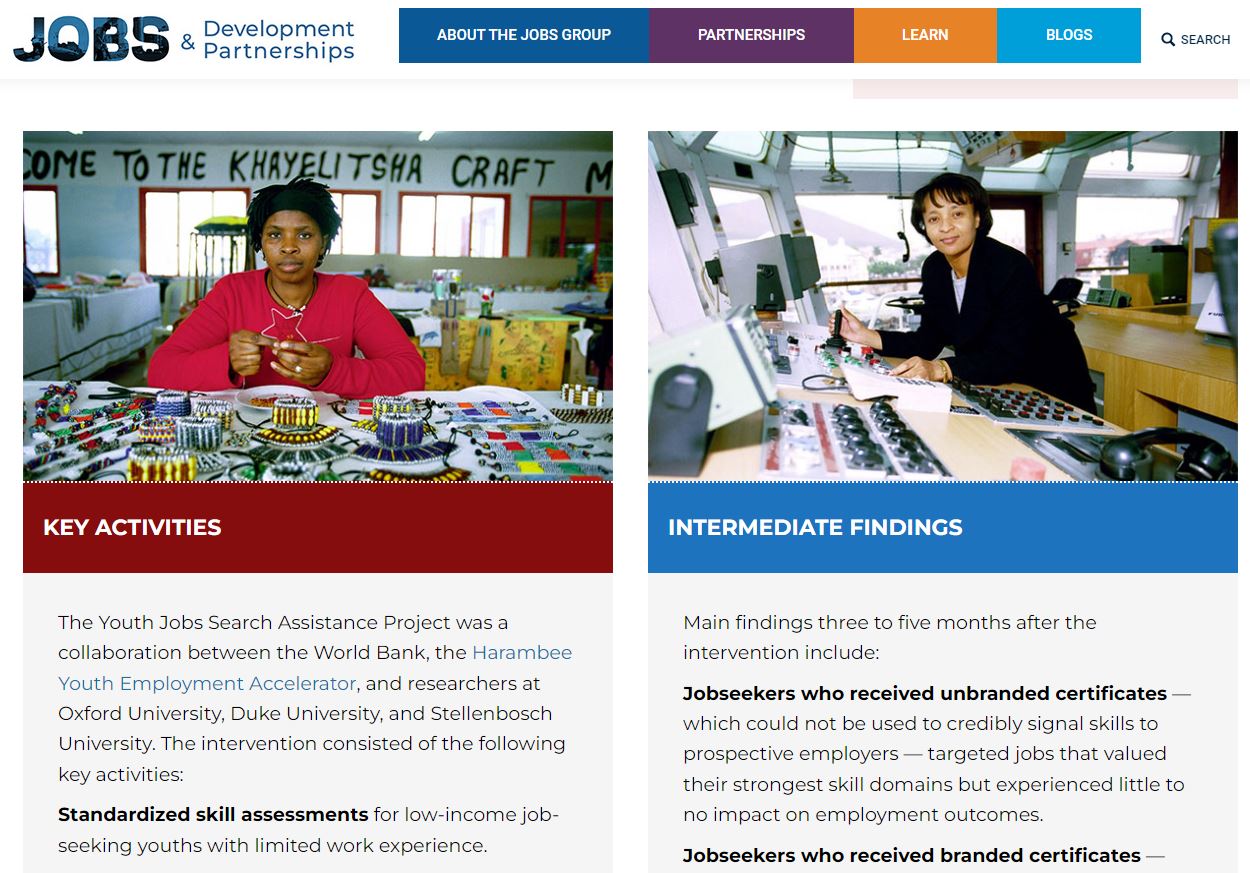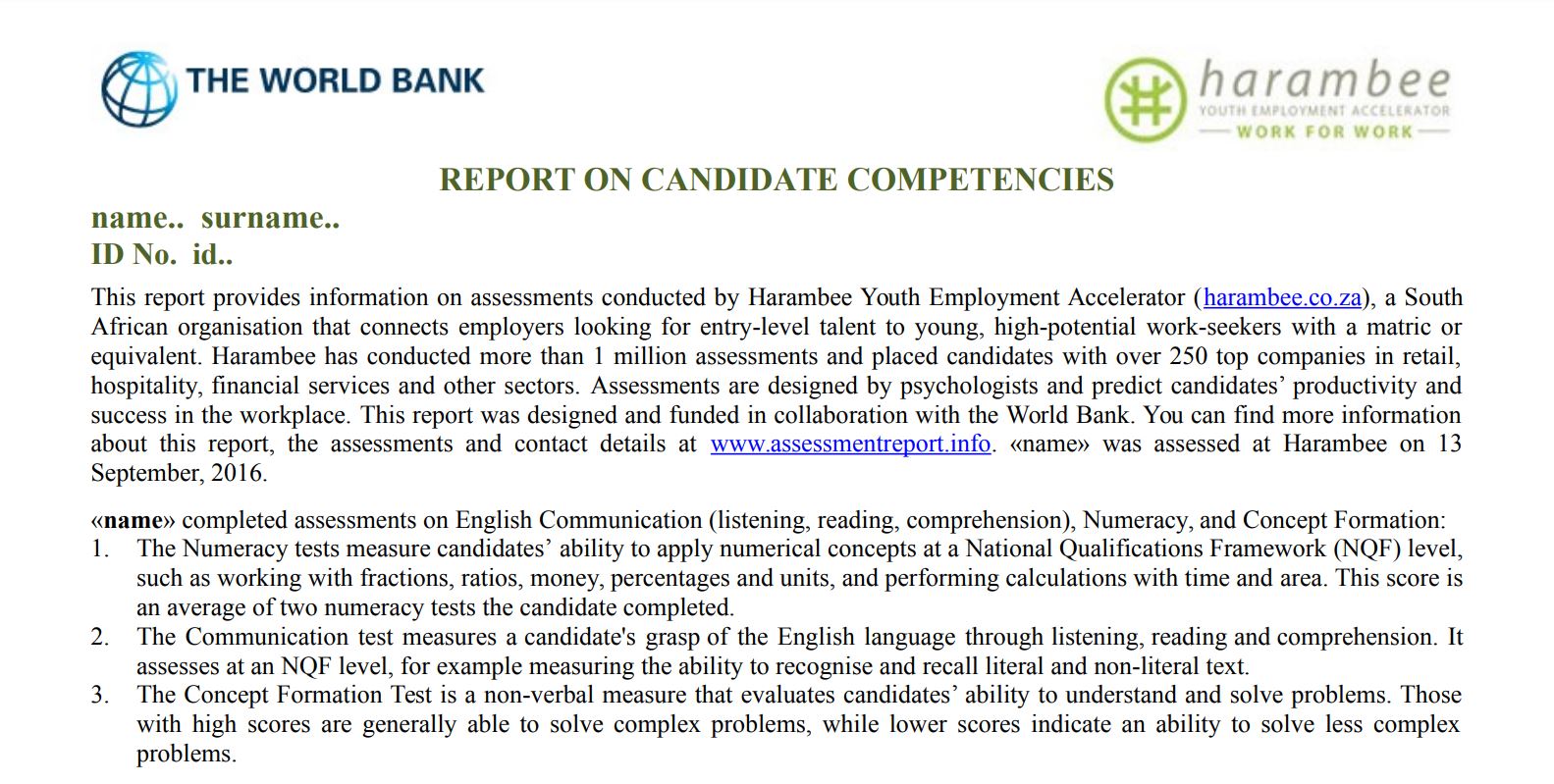In many labour markets, firms make hiring decisions and workseekers make job search decisions using potentially noisy signals of how productive workseekers will be if hired. Firms decide if and whom to hire, at what wage, based on characteristics like education and experience. Workseekers decide if they will search, and for what types of jobs, based on feedback on their performance in education and in past work. This information may only weakly predict performance in specific jobs, leading to “information frictions”.
Information frictions for firms can lead to hiring poorly-matched or low-skilled workers, reducing the risk-adjusted return from new hires, and leading to lower wage offers. Under certain conditions, information frictions can even reduce the number of workers firms hire in total. Information frictions for workseekers can lead workseekers to search for jobs that are a poor match for their skills, lead overconfident workseekers to reject job offers, or lead underconfident workseekers to withdraw from search entirely. These distortions can lead to lower wages and employment. Information frictions may be particularly important for young workseekers who cannot use prior work experience to learn about their own skills or certify these skills to prospective employers. Globally, there were nearly 71 million unemployed young people aged 15-24, in 2017, and youth were three times more likely to be unemployed than adults.
Harambee Youth Employment Accelerator is a social enterprise that builds solutions to address a mismatch of demand and supply in the youth labour market, by connecting employers with first-time workseekers. At the time of the study, Harambee served roughly 100,000 unemployed youth annually. Harambee targets a population where information frictions may be important: unemployed or underemployed youths from low-income backgrounds with limited post-secondary education, formal sector work experience, or access to referral networks.
Harambee measures workseekers’ skills through a variety of existing psychometric assessments used by job placement agencies and, in some cases, large firms. Based on their assessment results, the top one percent of individuals join a programme that prepares them for, and places them in jobs with Harambee’s partner employers.
This evaluation focuses on individuals who had completed the initial assessment, but were unlikely to receive placement into the full job readiness programme. Researchers partnered with Harambee and assessed 7,000 workseekers between September 2016 and April 2017, capturing their skills in six domains: cognitive skills, literacy, numeracy, problem-solving ability, ability to focus, and grit (a measure of persistence).
In the study period, unemployment in Johannesburg was 28% for the working-age population, 51% for people aged 15-24, and 32% for people aged 25-34. This rate is particularly high for Black youth. Many South African firms hire through social networks, referrals, or word-of-mouth, which may exclude workseekers without connections to the formal labour market.
The project involves a series of experiments. The first allows researchers to test whether revealing information to workseekers and firms simultaneously improves treated workseekers’ labour market outcomes, which would suggest information frictions exist in this labour market. The second and third experiments reveal information separately to workseekers and to firms. This enables researchers to understand whether firms, workseekers, or both sides of the market face frictions. This matters for designing the most effective interventions. It establishes which side of the market benefits from information, who might pay for information, and whether there are gains from providing information to both sides of the market. The fourth and fifth experiments establish if effects are due to the actual content of information, or merely demonstrate that any kind of certification improves outcomes.

Young workseekers in Harambee's Johannesburg office completing computer assessments.
The first experiment tests if giving both workseekers and firms assessment results improves treated workseekers’ labour market outcomes. Researchers randomly select some workseekers for a `public' certification intervention. This intervention gives them their assessment results and a set of 20 certificates that they can share with firms in job applications. The certificates show the workseekers' names and national identity numbers, are branded by Harambee and the World Bank, describe the assessments, and show the workseekers' assessment results. Reports ranked an individual’s scores on each assessment by if they placed in the top, middle, or bottom third of workseekers tested by Harambee in Johannesburg, rather than providing an absolute score. Candidates also received a briefing from an industrial psychologist about how to search for jobs, what the assessments meant, how to interpret their ranking relative to others, and additional guidance on how to share this report with employers. Participants in this group also received a soft copy of their report via email. A control group took the six assessments and received a briefing, but did not receive their individual results.
Researchers conducted a baseline survey before assessments, and surveys three to five months later to track job search and employment for both groups (see this note on methodology for surveying young and highly mobile workseekers over the phone to reduce attrition).
Results from first experiment
In the three to five months following certification, 70 percent of publicly certified workseekers use their certificates in job applications and they receive on average 0.4 extra job interviews and 0.1 extra job offers. Certification increases workseekers' employment rate from 31 to 36 percent and increases weekly earnings by 34 percent. The rise in earnings reflects both higher employment and higher earnings conditional on employment.
The second experiment tests if workseekers face information frictions and if certificates help workseekers to learn about their type and hence better target their job search. It is possible all the effects in the first experiment arise from firms learning about workseekers’ types.
Some workseekers were randomly selected to receive a `private' certification intervention, where they learn their assessment results in a form that is difficult to share with firms. They receive a single copy of a black and white certificate with their assessment results but without their name, their national identity number, or any branding. They also receive a briefing session with an industrial psychologist to explain how these results might guide their job search process, but this does not cover sharing reports with employers.
Results from second experiment
Results suggest workseekers do face information frictions. Relative to the control group, workseekers who receive either the public or private certification have more accurate beliefs about their assessment results and target their search toward employers they believe value the skills where they score highly. Privately certified workseekers earn more than control workseekers but less than publicly certified workseekers, and their employment rate is no higher than control workseekers. This shows that workseekers face information frictions that distort their job search and reduce their earnings. However, the larger effects of public certification relative to private certification suggest that some of the effects of the public certification arise because firms, as well as workseekers, alter behaviour when they have more information.
A clean test for firm-side frictions requires direct manipulation of firms' information sets, without any mediating behaviour by work-seekers. The third experiment tests if firms face information frictions using an audit study. Researchers submit applications to real job vacancies using real resumes from work-seekers in the sample. They submit multiple applications per resume, randomising whether applications include public certificates.
Insights from third experiment
Applications including certificates get 12 percent more callbacks. Although researchers do not observe the end result of job applications in the audit study, the callback effect shows that skill certification shifts at least one measure of firm behaviour.
Firms might respond to public certificates because they certify that the workseeker took the initiative to be assessed, or simply because they draw attention. Workseekers might become more confident or put in more search effort if they hold a certificate. Two experiments test if showing the assessment results on the certificates is important, not just the existence of the certificate.
First, researchers randomly select some workseekers to receive modified public certificates which describe the assessments and certify that the particular workseeker sat them, but do not show their assessment results. Outcomes for this group are substantially closer to the control group than the public certification group, suggesting limited effects on workseekers’ beliefs, search effort or labour market outcomes. Second, researchers use an incentivised choice experiment to show that most firms are willing to pay for access to a database of workseekers' assessment results and contact details, relative to a database of assessed workseekers with only contact details.
Results from fourth and fifth experiment
Both results show that knowing assessment results is valuable relative to simply knowing that assessments took place. However, these experimental samples are not large and the results are not always precisely estimated.


The purpose of the report used in this trial is to provide information beyond the scope of a CV about basic competencies of the workseeker. Harambee worked closely with partners from various organisations to inform the design of the assessments and reports to ensure that they are insightful for you in making your hiring decisions.
